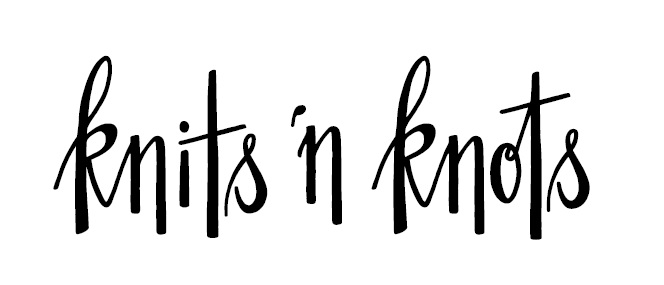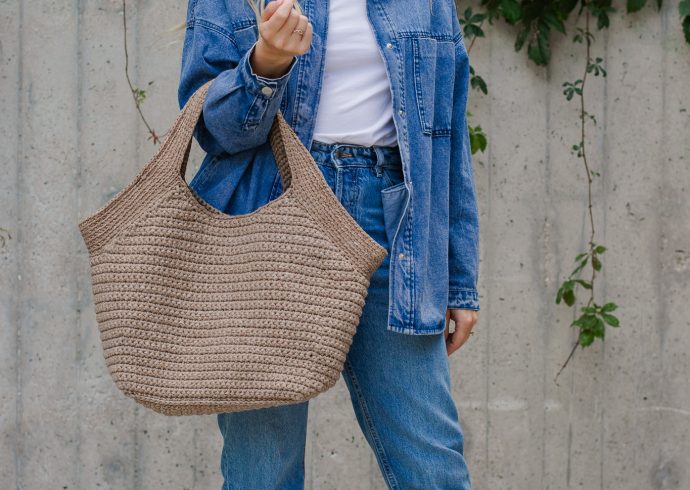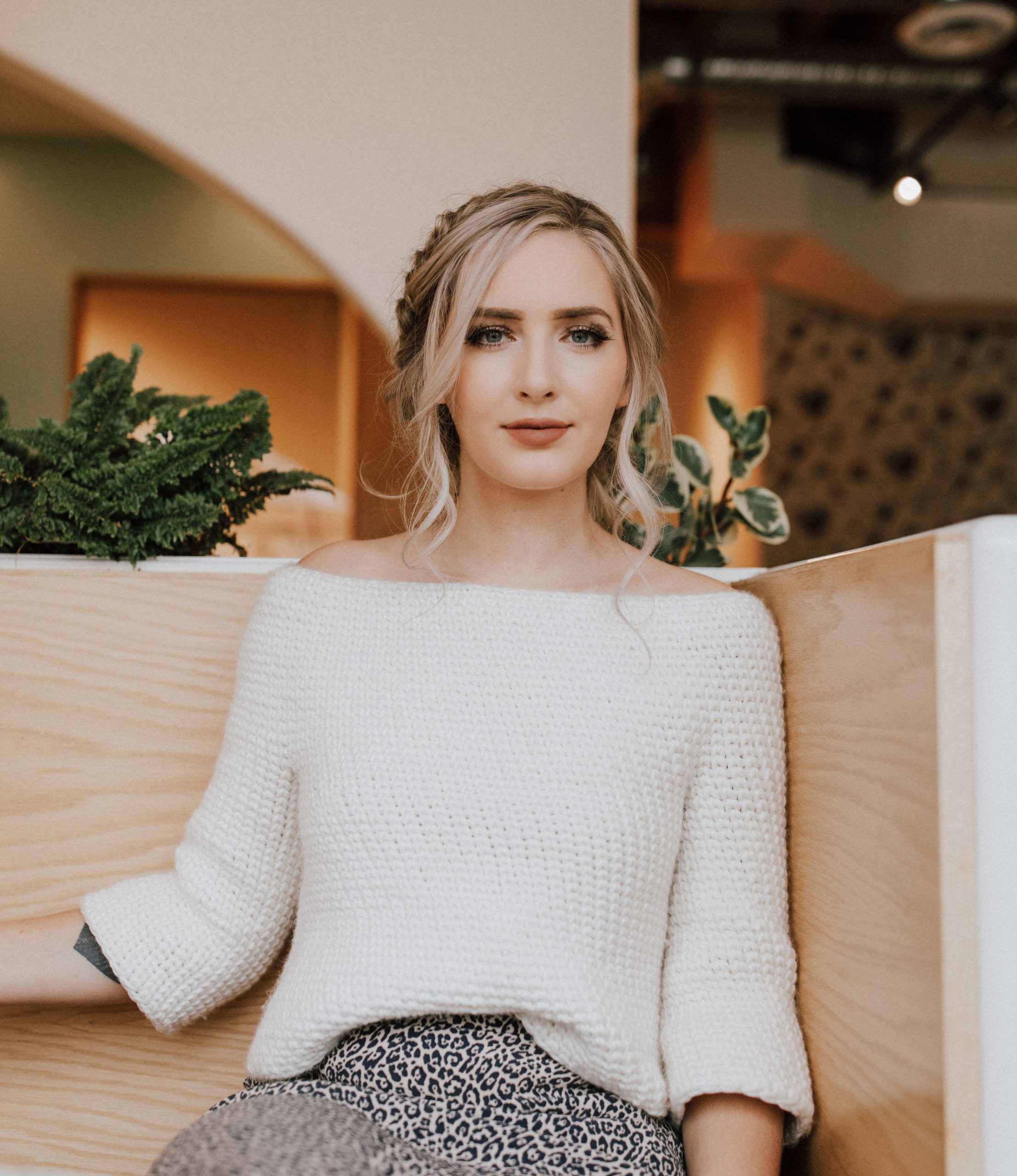
Sugarplum Sweater – Crochet Pattern for Off-The-Shoulder Circular Yoke Sweater (from my book: Modern Crochet Sweaters)
Hi all!
This post includes everything you need to know about the Sugarplum Pullover, a size-inclusive crochet pattern for a chunky, circular yoke sweater featuring a boxy, off-the-shoulder fit and an all-over knit-like stitch pattern.
The Sugarplum Pullover is from my book Modern Crochet Sweaters: 20 Chic Designs for Everyday Wear. This book includes 20 size-inclusive sweater patterns using a variety of techniques and construction methods to ensure there is something of value for every skill level. Each pattern is written in 9 sizes from XS to 5XL and each size has been thoroughly tested! We had over 500+ crochet pattern testers for this book to make sure that each size fits its intended wearer in a way that makes them feel beautiful. You can buy this book with confidence, knowing that each pattern was written for you and your unique body measurements.
Before we begin, here are some quick links for you:
- Find the PDF version on Ravelry here, on Etsy here, and on my website here.
- Add your finished project and view other completed projects on Ravelry here.
- Use the pattern hashtag #SugarplumPullover on Instagram to show off your makes! Be sure to check out the book hashtag, #ModernCrochetSweaters, too!
- Shop WeCrochet Biggo here! (Be sure to scroll down to see other great yarn substitutes!)
- Shop my book on Amazon (US) here.
- Shop my book on Amazon (CA) here.
- Shop my book on other platforms outside of North America here.
- Read about my experience getting a book deal here!
- For any questions about this pattern, please email knitsnknotswpg@gmail.com and I’ll get back to you asap!
Order my book – Modern Crochet Sweaters: 20 Chic Designs for Everyday Wear – here!
If you want to be notified of all new pattern releases (and get exclusive discounts on all new paid patterns), sign up below!
This post contains affiliate links. This means, should you make a purchase, I will receive a small portion of the sale at no extra cost to you. All opinions are my own. View my Privacy + Disclosures Policy here.


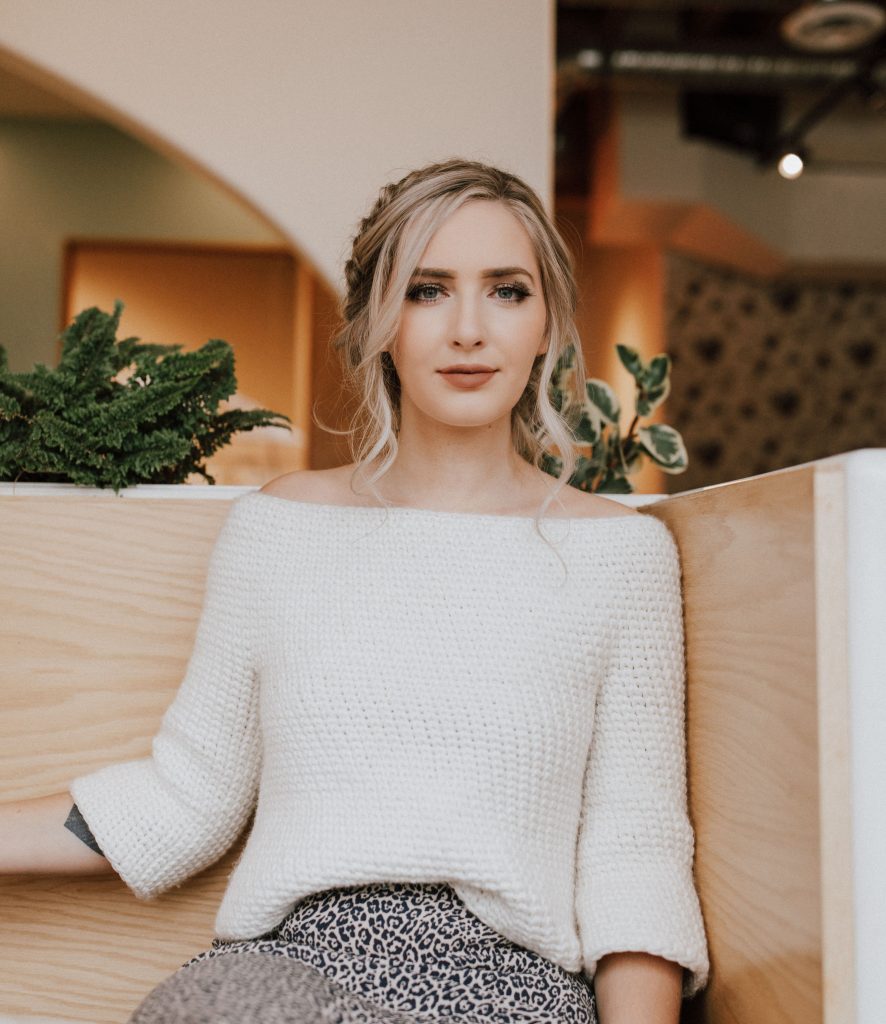
About Sugarplum
This wintry, off-the-shoulder piece is simple in construction, but majestic and stately in appearance. This design explores the juxtaposition of a chunky, winter yarn with a seemingly lightweight design. The neat, uniform stitches create a smooth, continuous fabric that lays effortlessly on your body like a freshly fallen blanket of snow. The inherent bulkiness of the yarn combined with a tight stitch pattern creates a structured, rigid fabric. Rather than trying to resist this, I played this to my advantage and used this as a design feature—an opportunity to create an oversized, boxy statement piece that accentuates the stiffness and structure of the garment.
This easy-to-crochet sweater can easily be worked up in any size within just a few days—perfect for those who are new to garment making.
Note: Once you have mastered this pattern, you may want to try the Amber Magic Off-the-Shoulder Yoke (here)—a warm-weather, fingering weight version of this sweater with a little more shaping in the arms.
Getting Started: Knowing Your Measurements
This book uses the Craft Yarn Council (CYC) to determine sizing. The CYC is the industry standard when it comes to knit and crochet sizing. While you will be able to produce a beautiful sweater by following the written patterns, I also like to include customization tips throughout each pattern so that you can adjust based on your unique body measurements. For example, shortening or lengthening a sleeve, or adjusting for a larger upper arm than written for your size. This way, you can modify the pattern with confidence, if needed. For example, I usually need to shorten garments because I have a short torso. My hips also fall under a different size than my bust – not everyone fits perfectly into these sizing standards; they are simply averages, not set-in-stone numbers.
Understanding how your body deviates from the CYC standard measurements gives you the ability to tailor a sweater to perfectly fit you, rather than feel disappointed that your body doesn’t fit into the sizing standards. I recommend that you measure the largest part of your bust and then refer to the CYC website (click here) to find out which size you would fall under. Then, look at the other measurements that are included for your size, and see which of these measurements deviate from your actual body measurements. Knowledge is power, and once you understand how your body deviates from the CYC standards, you will be able to anticipate this deviation and assume it translates through most patterns. For example, if your upper arm circumference is slightly larger than the CYC sizing chart reads, then you can expect you may have to ignore a few decrease rows when working the sleeves of your next sweater, or even follow the sleeve instructions for the next size up, if possible.
Getting Started: the Sugarplum Pullover
Yarn: Bulky—WeCrochet Biggo in Bare
- 50% Superwash Merino wool, 50% nylon
- 110 yds [100 m] per 3.5-oz [100-g] hank
- Find this yarn on crochet.com or visit yarnsub.com to find comparable substitutes.
- Scroll down for an extensive list of yarn substitutes and yarns used during testing.
Yardage: 7 (7, 8, 9, 10) (11, 12, 14, 14) hanks of Biggo, or
- 700 (750, 850, 975, 1050) (1200, 1300, 1450, 1525) yds
- 641 (686, 778, 892, 961) (1098, 1189, 1326, 1395) m
Yardage is for a slightly cropped sweater and ¾-length sleeves as shown in the sample and the sizing chart. Additional yardage will be needed if you would like a full-length sweater or longer sleeves.
Biggo is listed as a bulky weight, category #5 yarn and leans towards the lighter side of this category. Despite this, the fabric in the sweater shown is quite dense when paired with the chosen stitch pattern. For best results, choose a worsted weight or aran weight, category #4 yarn for a less dense fabric that will provide better drape than a bulky weight as long as gauge is matched. If you choose to use bulky weight yarn as I did in the sample shown, I recommend you choose a breathable fiber like wool and avoid non-breathable fibers like acrylic if possible. Make sure to swatch your chosen yarn to be sure you are satisfied with the resulting fabric before continuing.
Hook: Size U.S. K/10½ (6.5 mm) or size needed to obtain gauge
Notions: Tapestry needle, five locking stitch markers
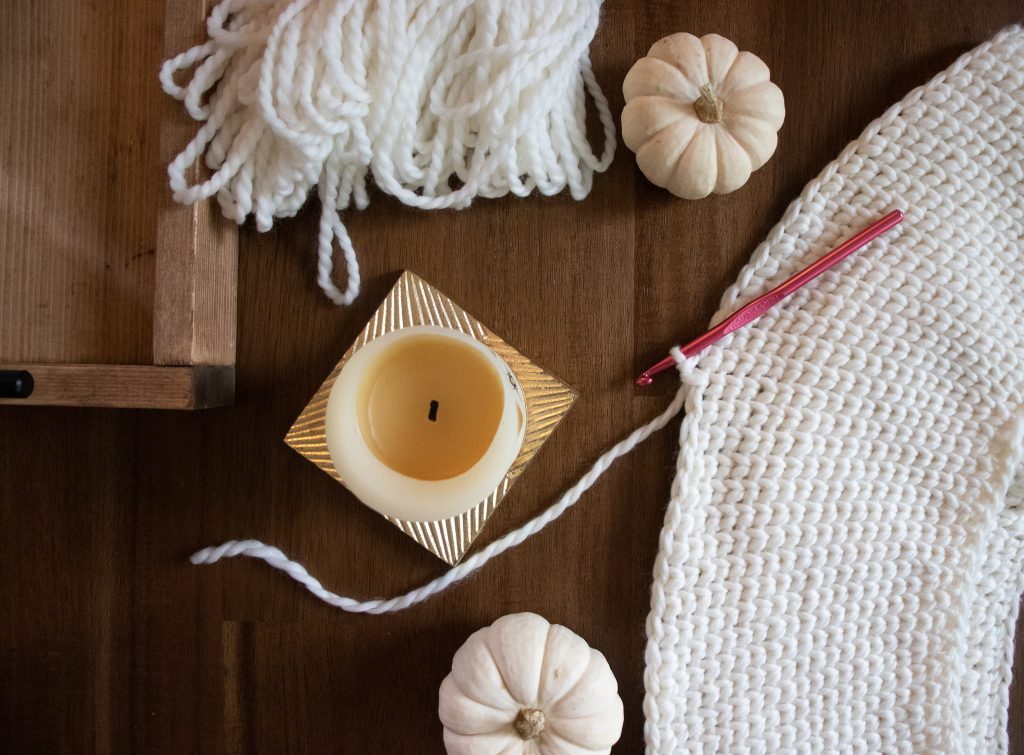
Customization Ideas + Tips When Crocheting This Sweater
Tips
- Sizing: This sweater is written in nine sizes as follows: XS (S, M, L, XL) (2X, 3X, 4X, 5X). Make sure to follow the numbers for your size only.
- An “x” indicates the instruction is not applicable to your size.
- Stitch Counts: Stitch counts are listed after each rnd. If no stitch count is given, there has been no change since the previous rnd. If only one number is provided, it applies to all sizes.
- Right Side: The “right side” is the side of your work that faces you as you are crocheting it.
- Construction: This sweater has a circular yoke construction, worked seamlessly from the top down. After completing the yoke increases, the yoke is then separated to create space for the body and the arm holes. The body is worked next, and the sleeves are worked last.
- CSC Stitch: See photo tutorial below for working the CSC stitch
- The first few rounds are most difficult to find the proper stitch placement. Once you have a few rounds worked, you will find your rhythm and it will become much easier!
- BOR marker: You will use a BOR marker to mark the center-back. The exact center point only matters because the beginning tail will be woven in at the center back. Note that because you are working in a spiral, your BOR marker will gradually drift off-center. Simply replace it into the approximate center st as often as needed, using the tail from the beginning chain as a reference point. This doesn’t change your stitch count or affect anything besides the placement of the center-back.
- You don’t “need” a marker here if you don’t want to use one, since the tail is what denotes the back from the front.
- Work First Round Loosely: In Rnd 1, single crochet very loosely into each chain. On Rnd 2, you will be working into your sc sts so you want them to be loose enough that you can insert your hook through them.
Customization Ideas
- Adjusting the Yoke Depth: Refer to yoke depth measurement in sizing chart (in the book or on page 4 of PDF). Try on your sweater periodically to see where the finished yoke would lay on your body. If it seems too deep for you (or not deep enough), you can eliminate non-increase rnds (or add more) before separating the yoke as you see fit.
- Adjusting Length: Csc in each st around until body measures 9 (9.5, 10, 10.5, 11) (11.5, 12, 12.5, 13)” [23 (24, 25, 27, 28) (29, 30, 32, 33) cm] from underarm or until desired length. When satisfied with length, sl st into next 3 sts and fasten off.
- Note: This stitch pattern creates a dense fabric without much stretch. Adding length to your sweater may make it feel restricting and challenging to take on and off. If adding length, try it on every few rounds to make sure you are happy with the fit.
- Adjusting Sleeve Circumference: The sleeves of this sweater are designed to be roomy and shapeless, without any decreasing. If you would like more tapered sleeves, you can decrease as often as you like by working 2 sts together but keep these decreases in line with the center-underarm (where you attached your yarn to begin the sleeves) so the decreases are less visible. Keep in mind that this yarn and stitch pattern is not very stretchy, so you will not want to make your sleeves too tight.
- For a Color Block Sweater: Change colors when desired by working the final yarn-over of the old color using the new color, then drop the old color and continue crocheting with the new color. You can try working your color changes on the shoulder or the side of the body so they are more inconspicuous. Then, use the two tails from the color change and tie them together on the wrong side of the fabric, paying close attention to the appearance of the color jog on the right side.
- To Increase for the Hips: Place a marker on the two sides of your sweater, directly beneath your underarm. Once you are ready to add circumference, work 2 csc into the marked stitch, csc to next marker, and work 2 csc into this marked stitch, too. Then, work a few rounds without any increases before increasing again. Repeat until satisfied with the circumference.
- For a Light, Warmer-Weather Version: Match gauge with a worsted weight yarn or even DK weight yarn!
Center Single Crochet (CSC) Tutorial
The center single crochet stitch is worked the same way as a regular single crochet stitch—the only difference is the placement of your hook. Insert your hook in between the two posts of your designated stitch, rather than underneath the front and back loops of the stitch. The stitch pattern created from this unique hook placement creates the appearance of stacked V’s that resemble the look of knitting.
If you’re having trouble, try pulling your loop up a little higher than you normally would before working your final yarn-over (see middle photo) to make it a little easier for you to work into this stitch on the following round.
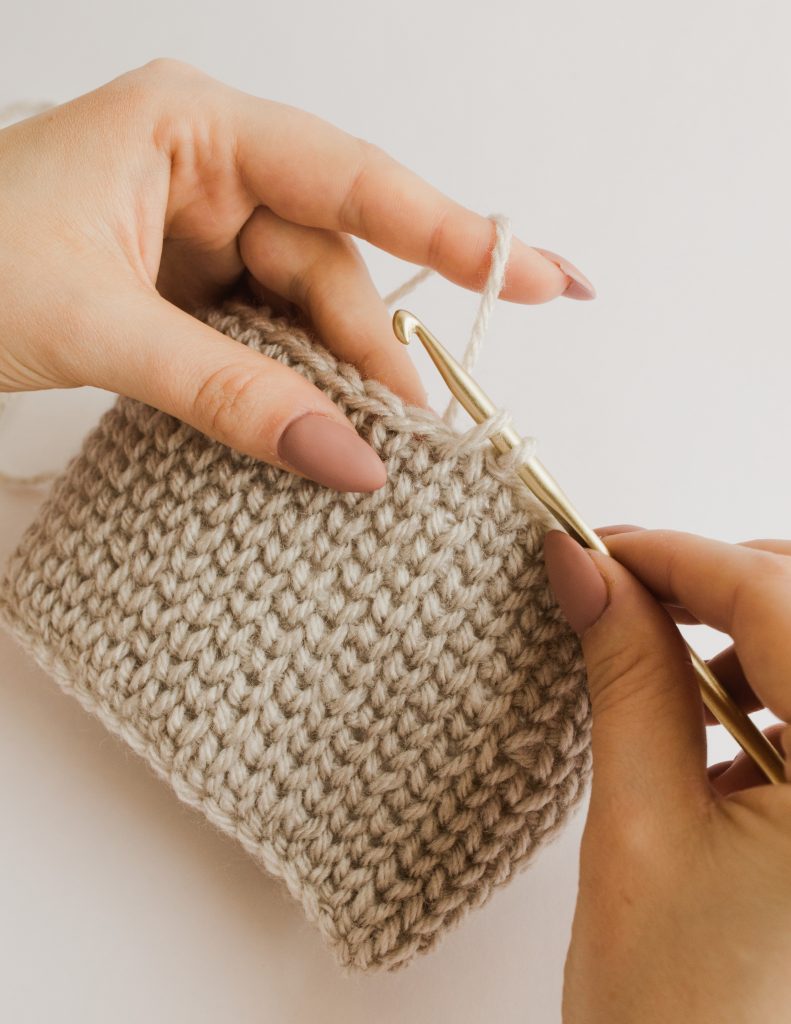
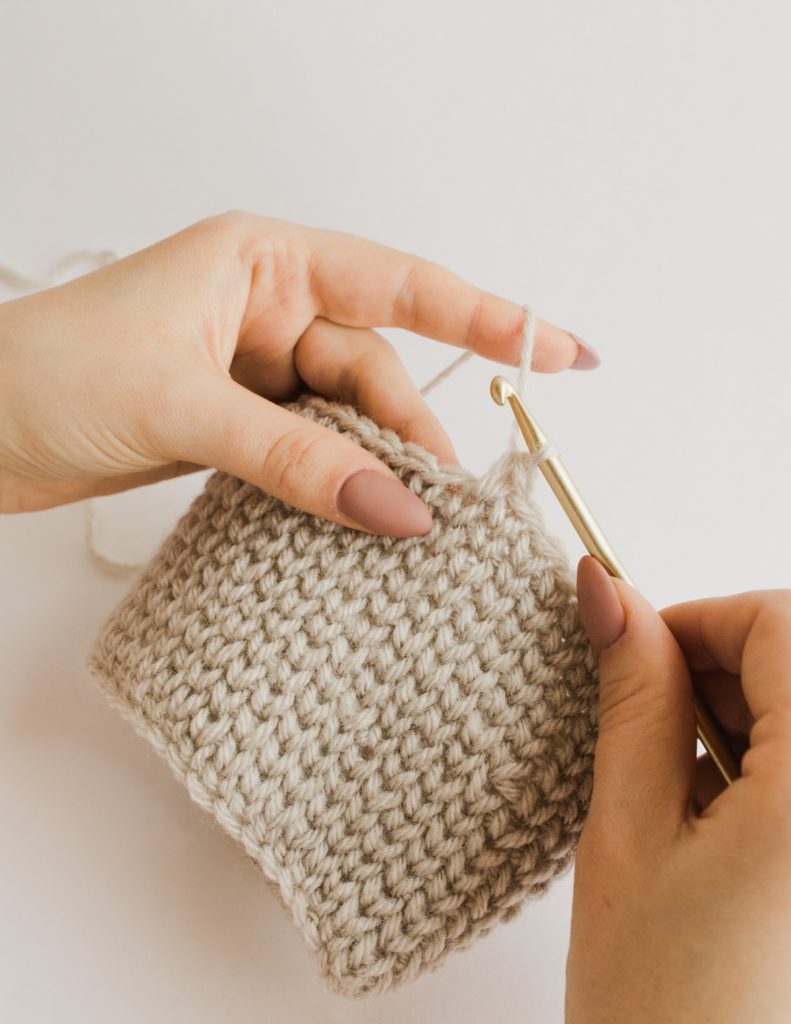
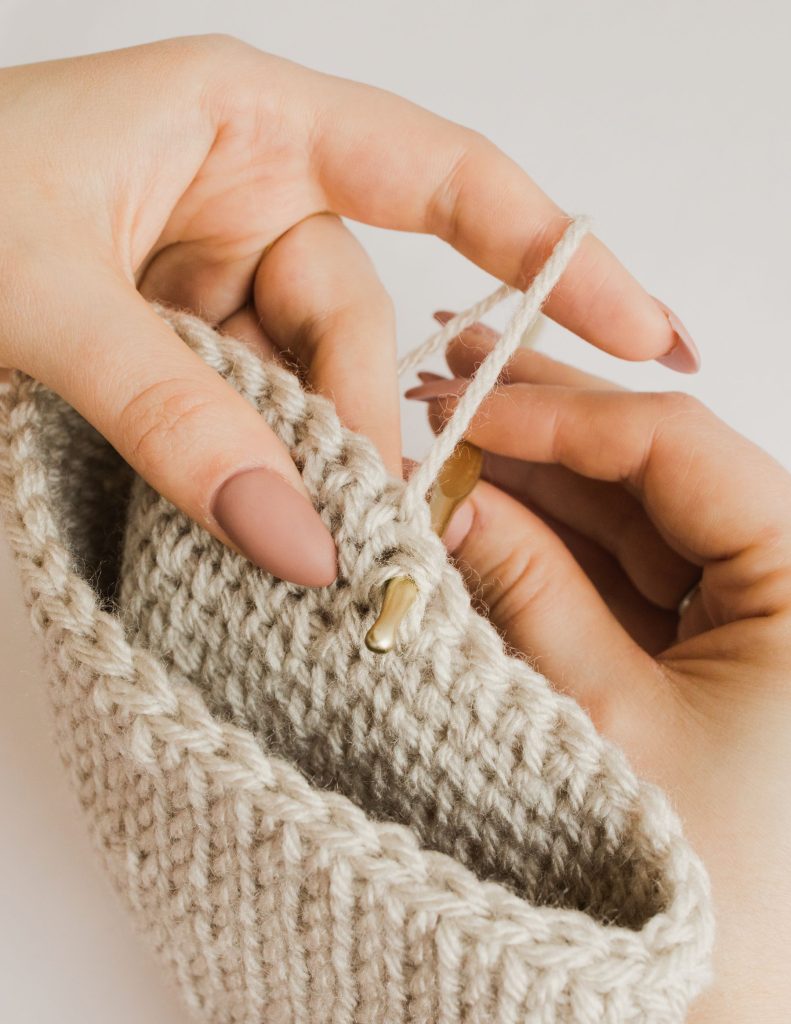



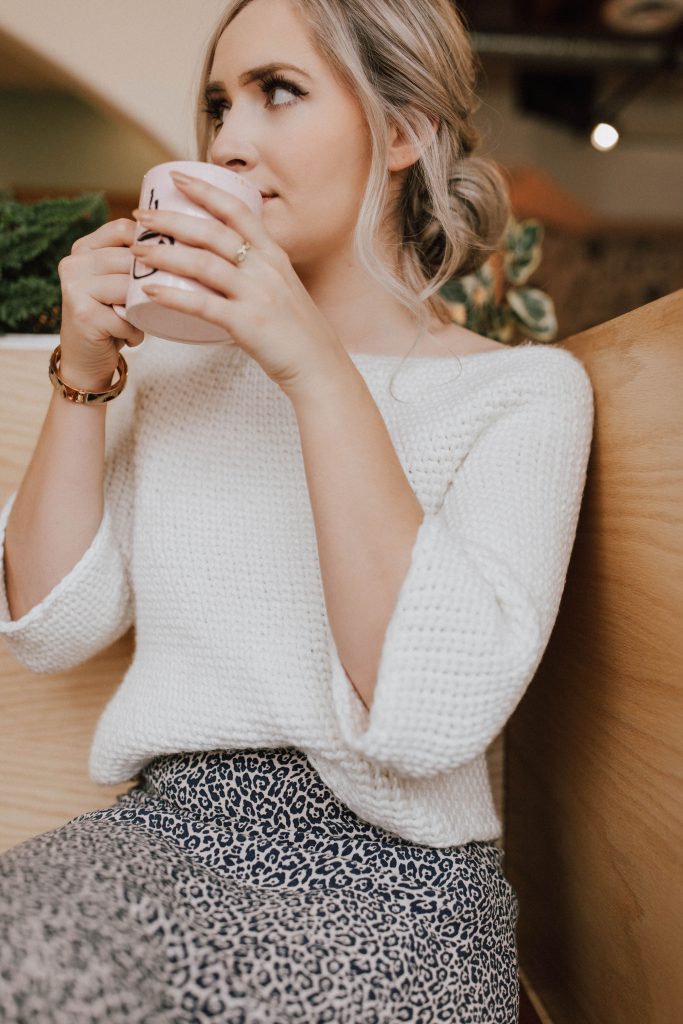

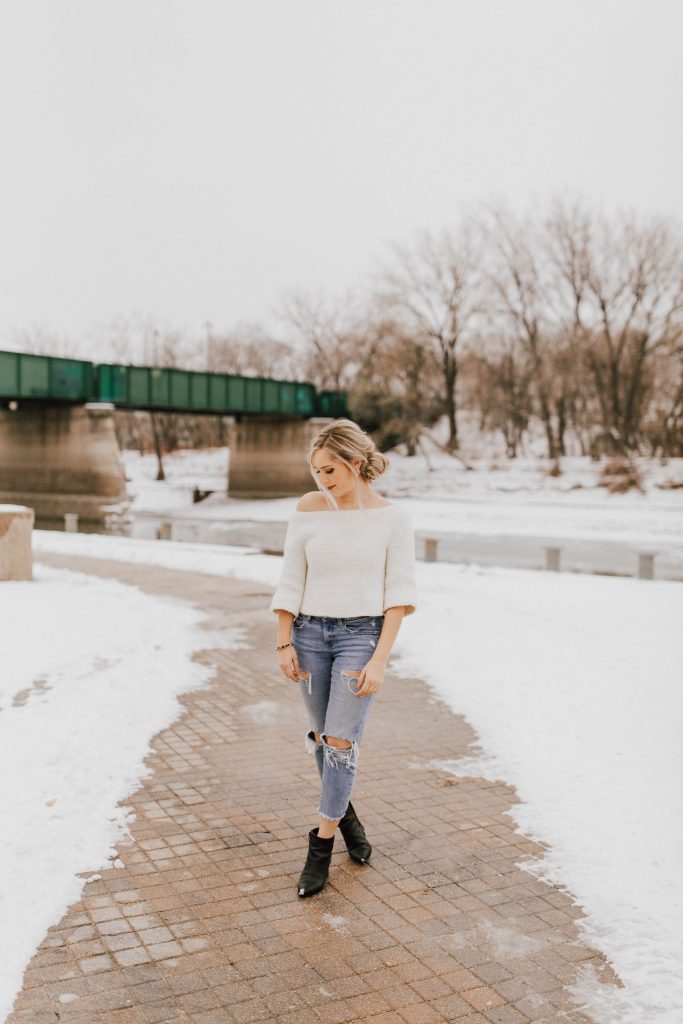

Yarn Substitutions
The yarn used in my sample, Biggo, is a blend of 50% Superwash Merino wool, 50% Nylon blend. I used a bulky weight, category #5 yarn for a statement, boxy pullover, however you can use any worsted weight yarn for a lighter, less bulky version. There are a lot of yarns you could use in place of Biggo, it all depends on the style and fit you like best.
When substituting, there are a lot of great options you could try! Matching the fiber content isn’t necessary; most fibers should produce a beautiful sweater. Substitute WeCrochet Biggo with any bulky weight, category #5 yarn or worsted weight, category #4 yarn that matches gauge. Biggo is a category #5 yarn, but you can match gauge with any aran or heavy worsted weight.
The following yarns can be used in this pattern and will produce a lovely finished sweater (list includes both bulky + worsted weights):
Lion Brand Yarns:
- Chainette
- Cotton-Ease
- Heartland
- Hue And Me
- Jeans
- Landscapes Breeze
- Mako Cotton
- Mandala Ombre
- Schitt’s Creek
- Scarfie
- Touch of Linen
- Woolspun
Knit Picks/WeCrochet Yarns:
- Chroma Worsted
- City Tweed Aran/HW
- Comfy Color Mist
- Comfy Worsted (cotton option)
- City Tweed Aran
- Muse Hand Painted
- Provincial Tweed
- Simply Wool Worsted
- Snugglepuff
- Swish Worsted
- Wool of the Andes
- Wonderfluff
- Wonderfluff Ombre
LoveCrafts Yarns:
- Red Heart Soft
- Blue Sky Fibers Worsted Cotton
- Malabrigo Worsted
- Rowan Kid Classic
- Lopi Lettlopi
- Cascade Yarns 220 Merino
- See more worsted weight yarns from LoveCrafts here!
Other Yarns:
Pattern Tester Photos
There were 500+ pattern testers for this book because I wanted to ensure all sizes are satisfied with the pattern and fit! Below you can see photos from the testing process to see how the sweater looks on different bodies with different modifications made using a variety of yarns.
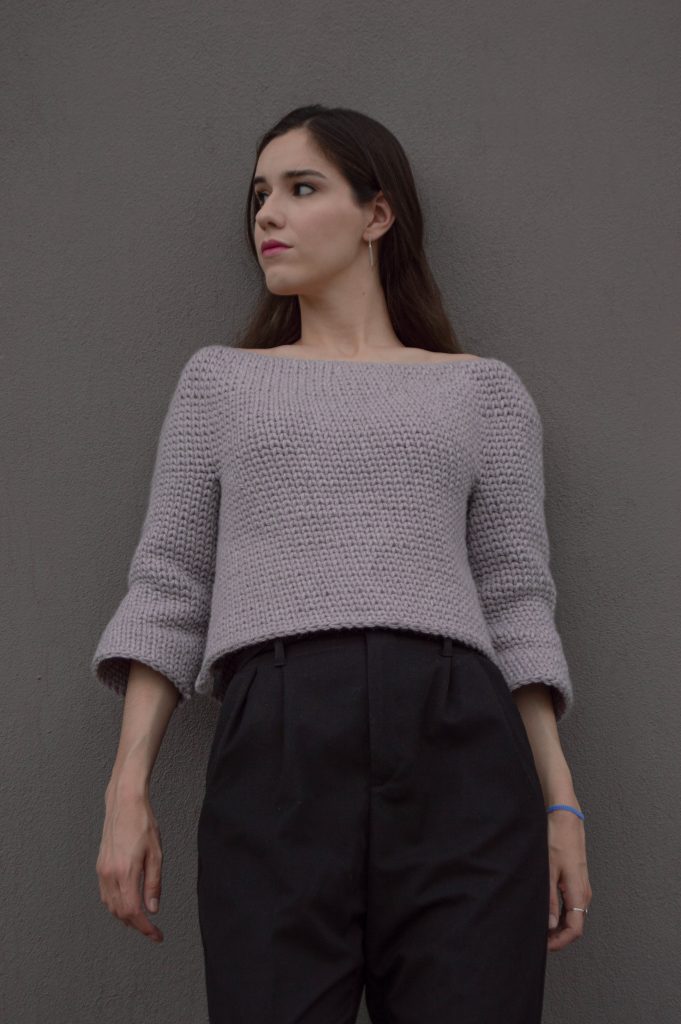
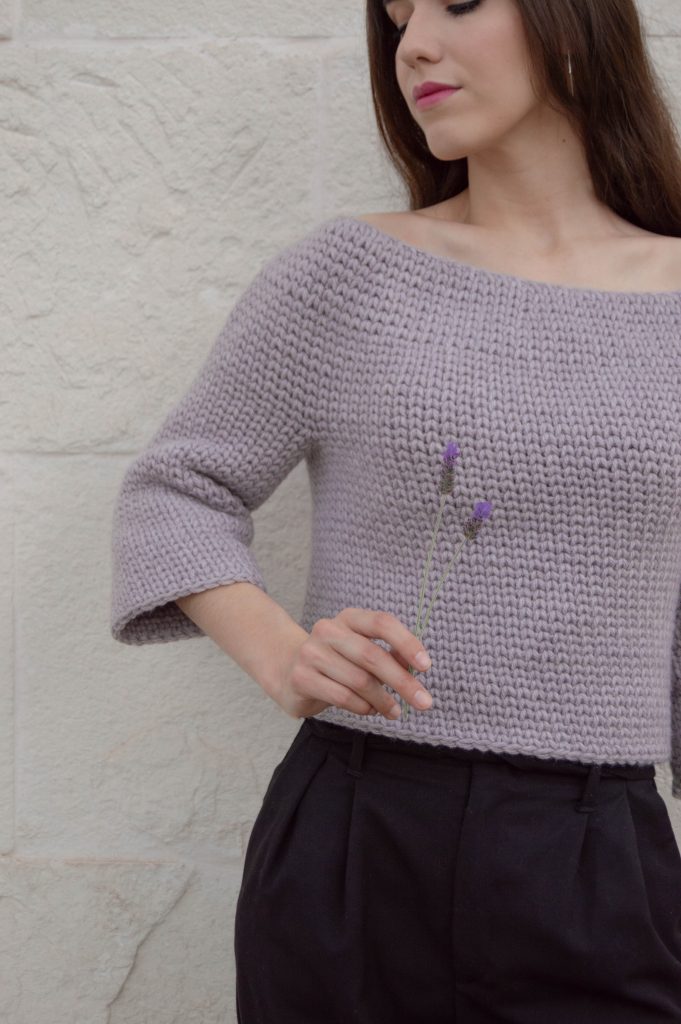
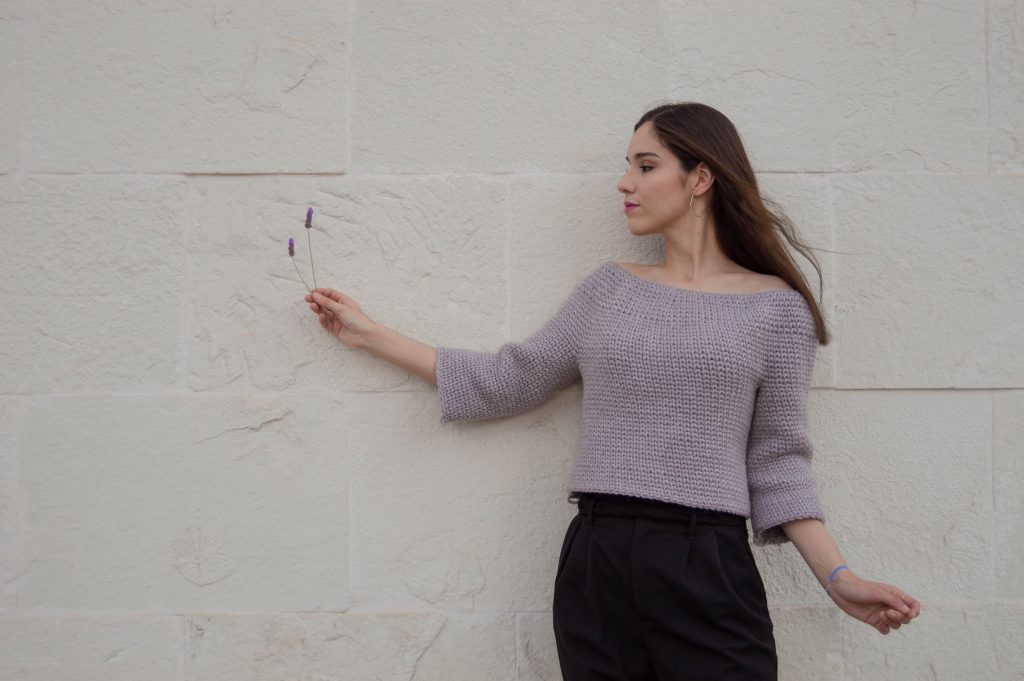
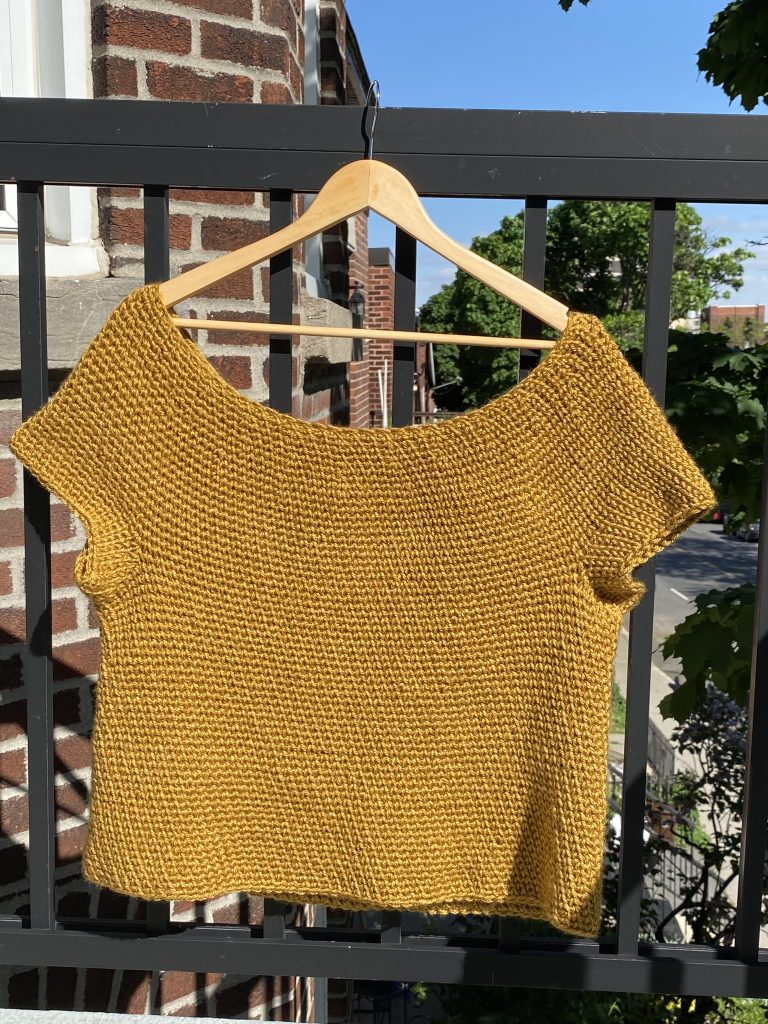
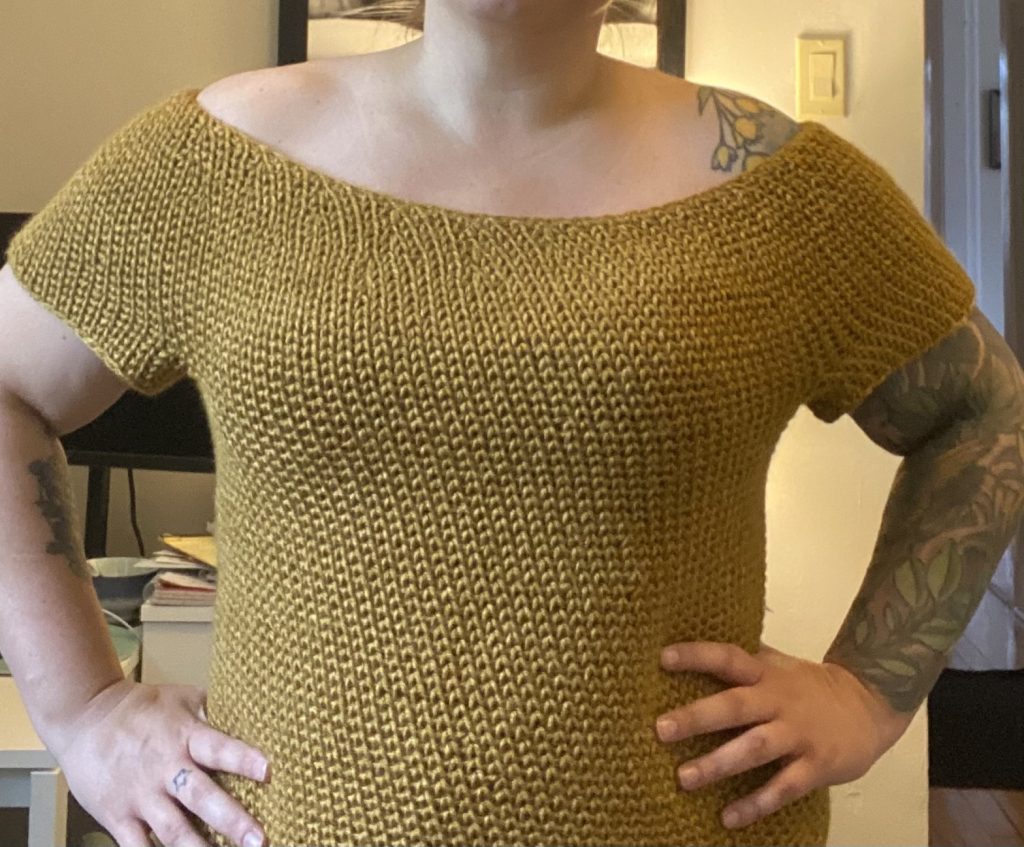

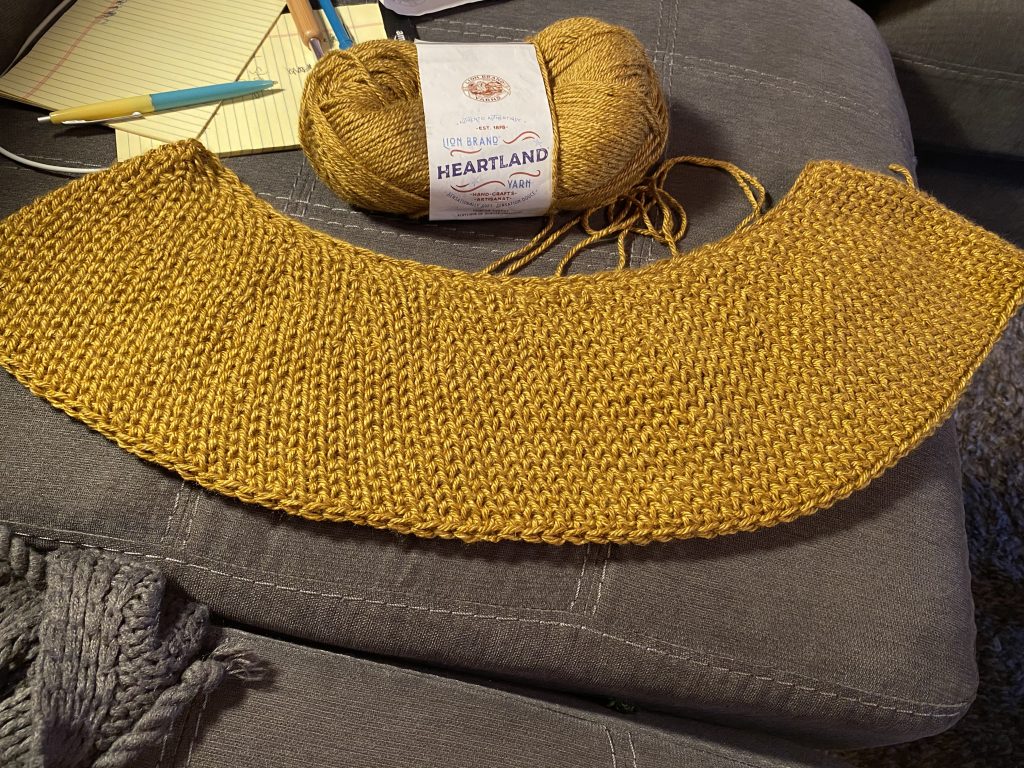
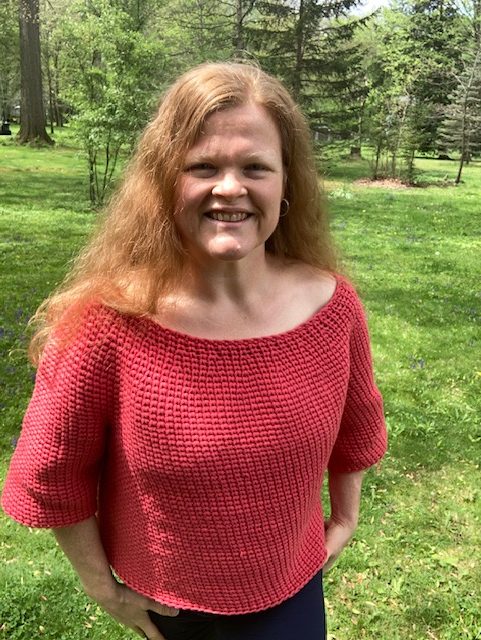
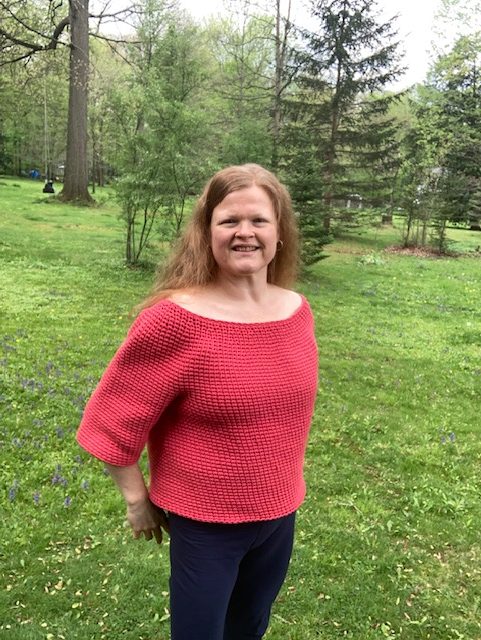
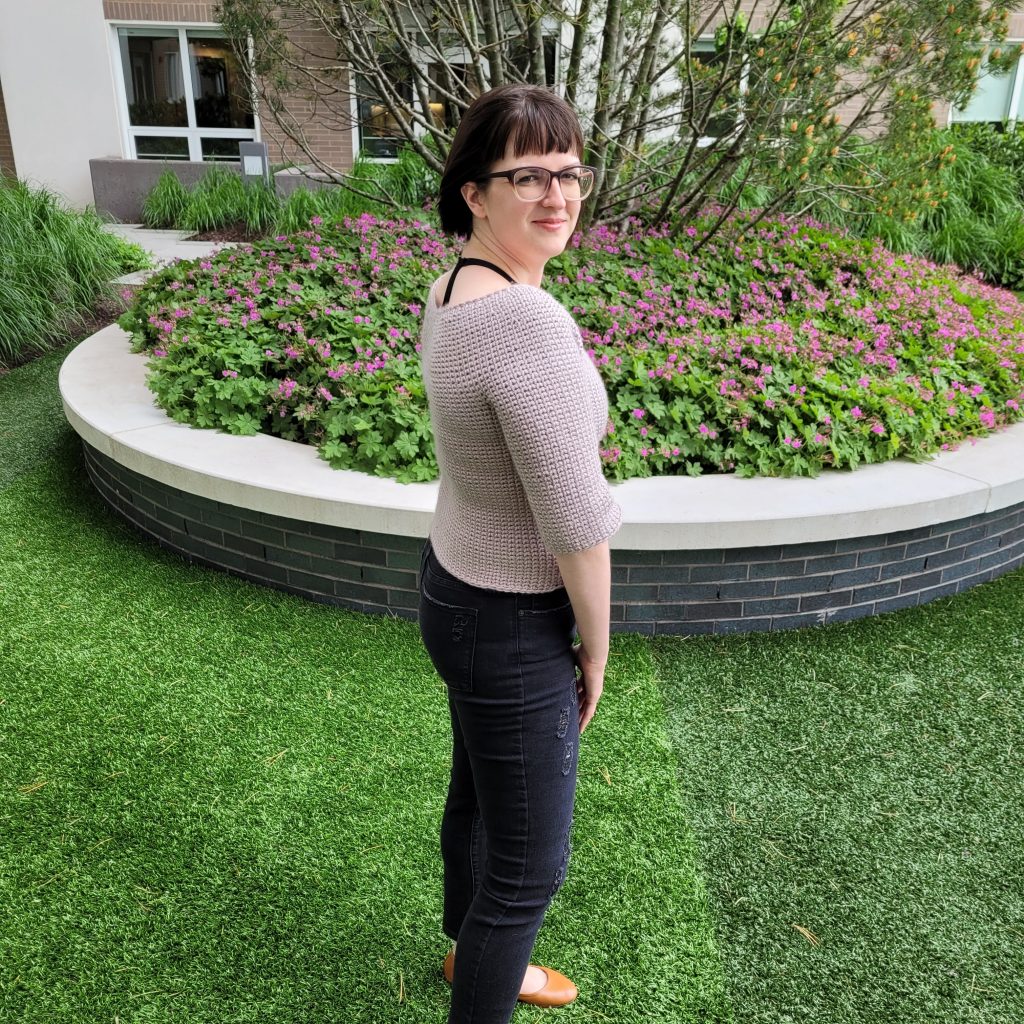
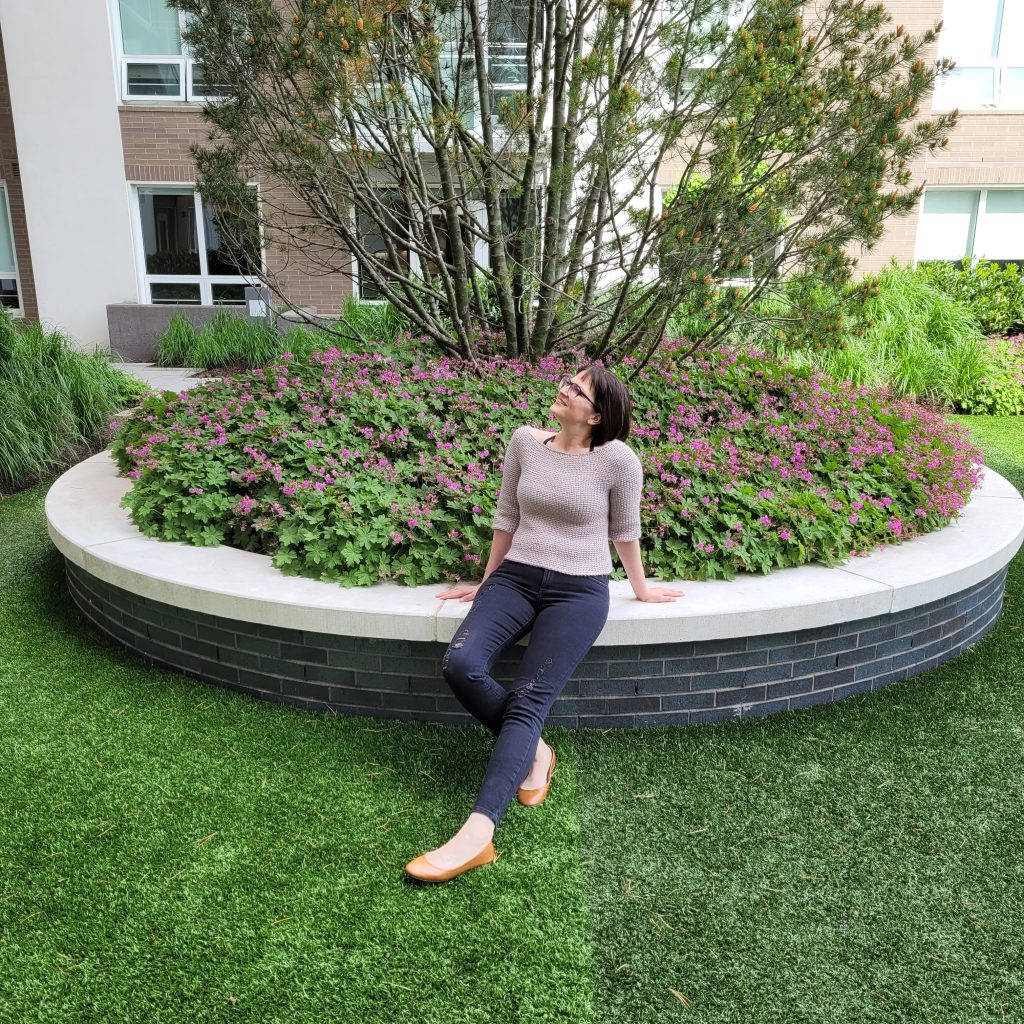
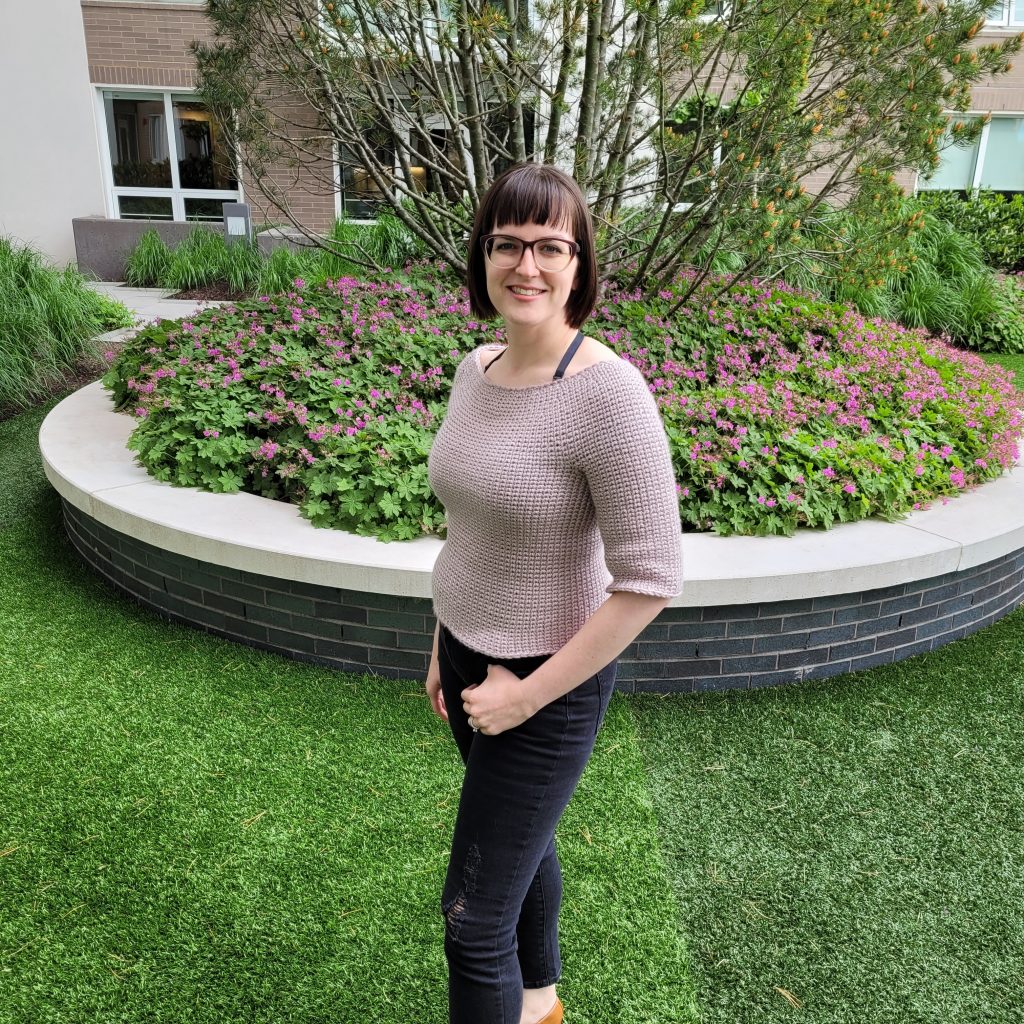
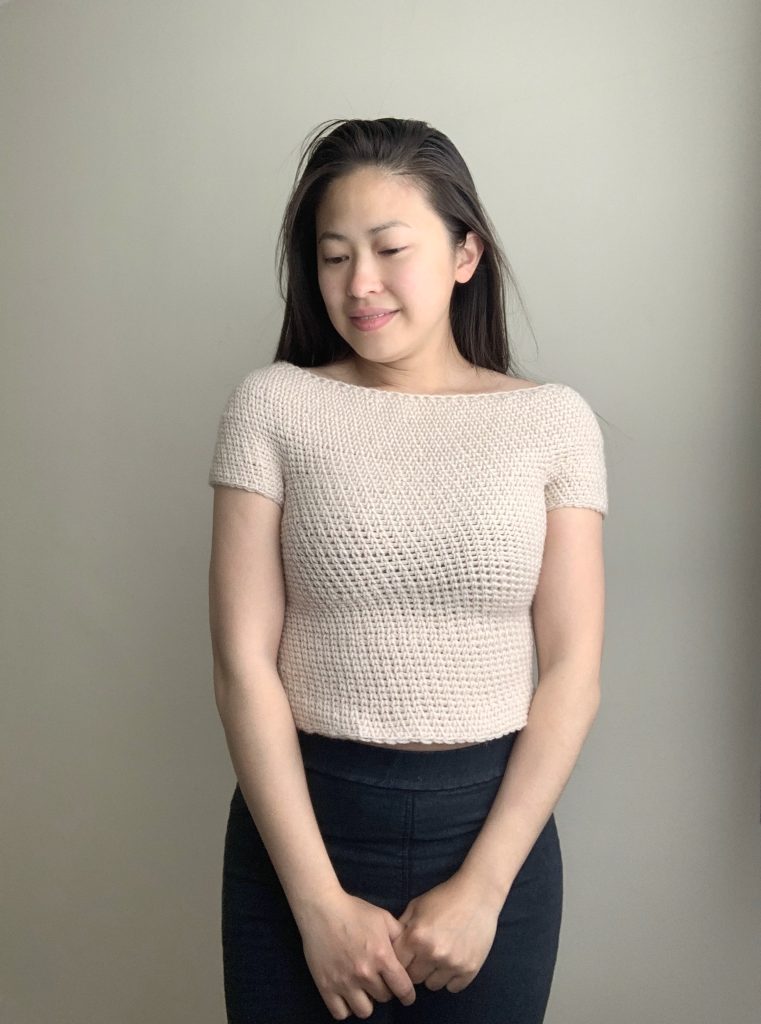
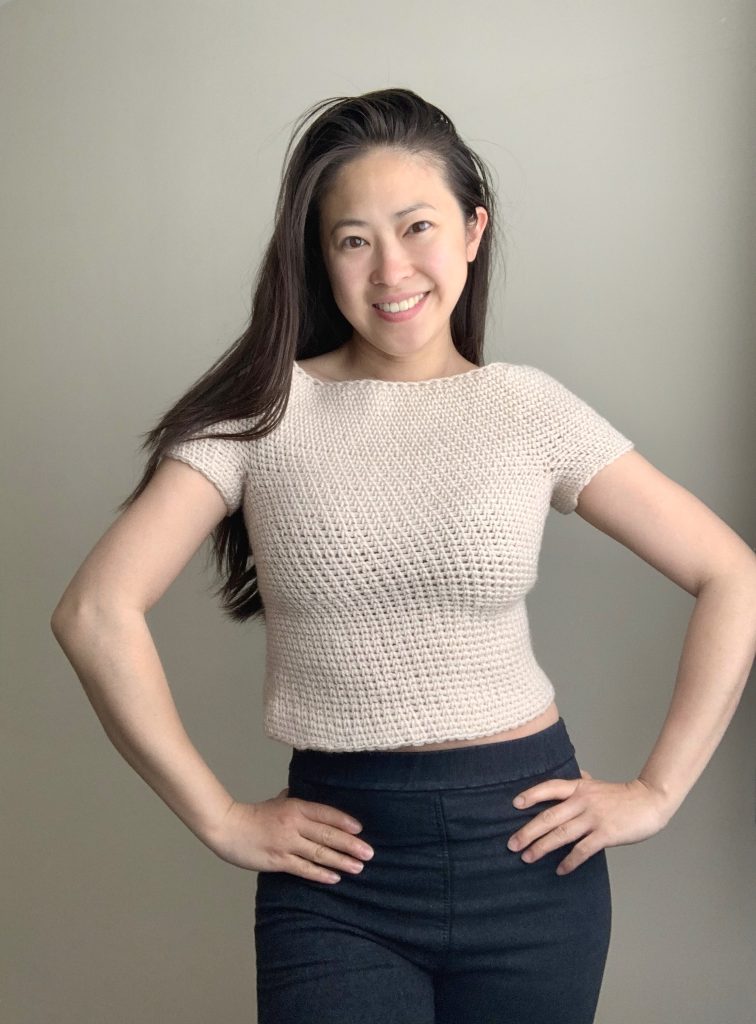
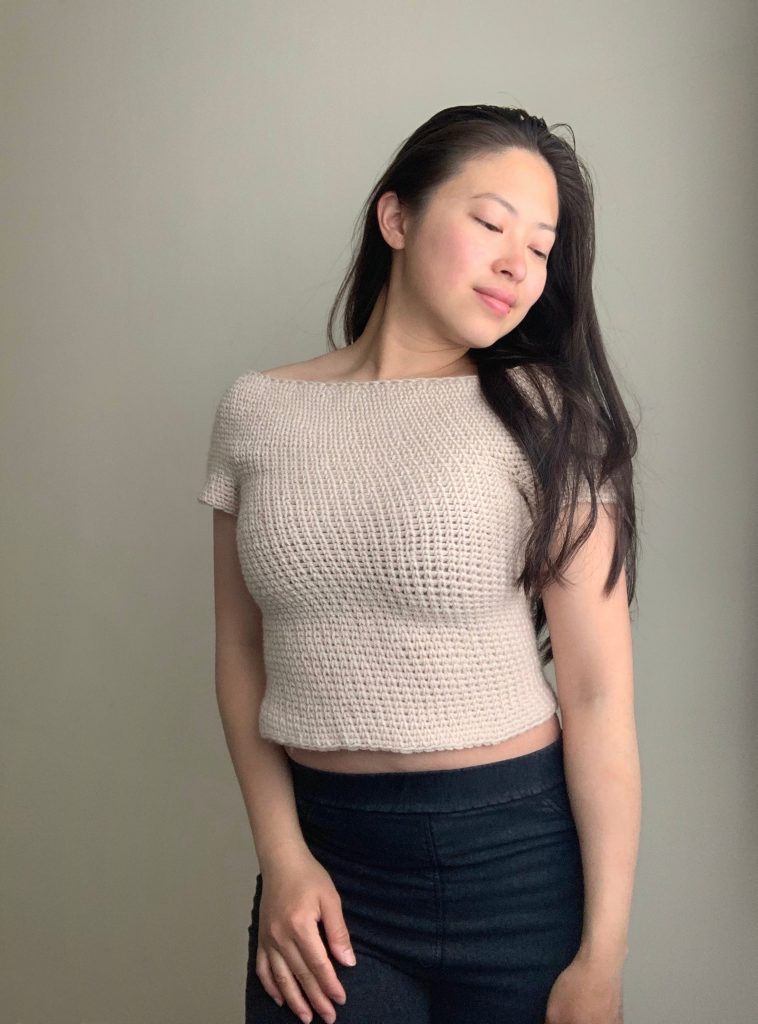
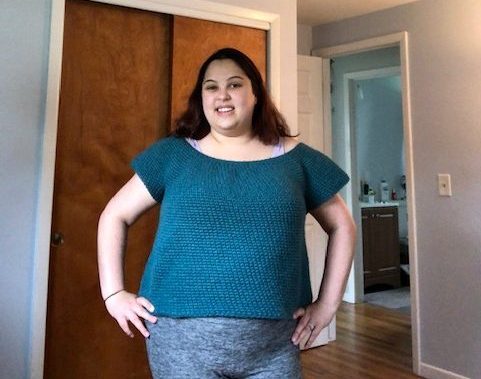
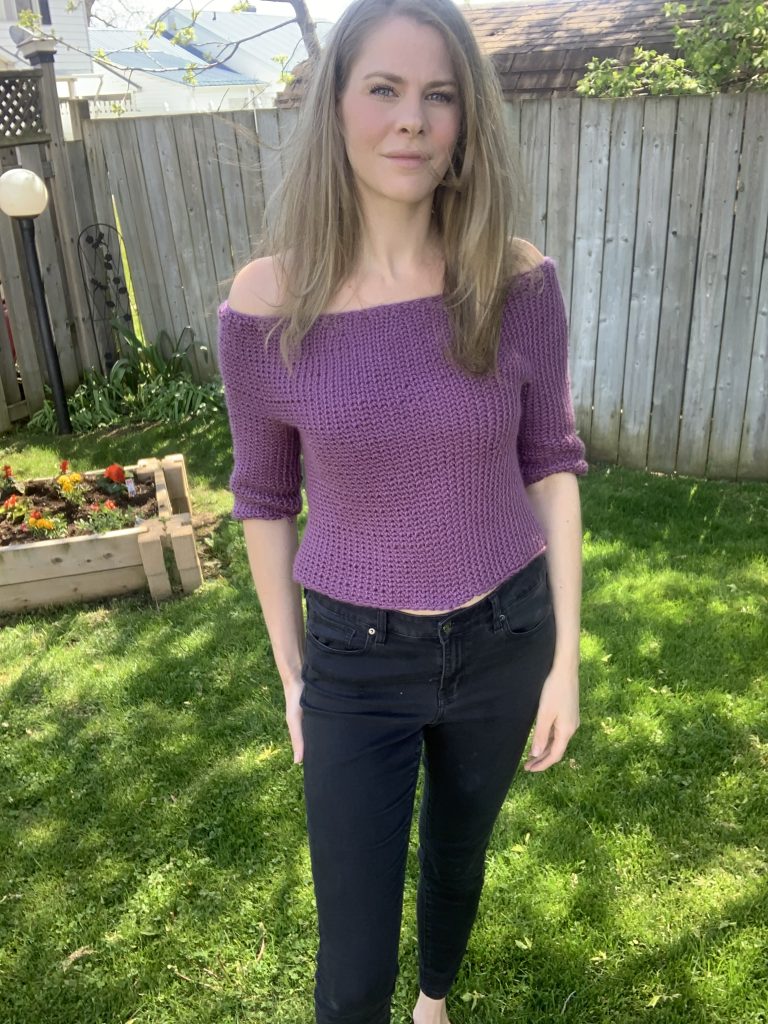
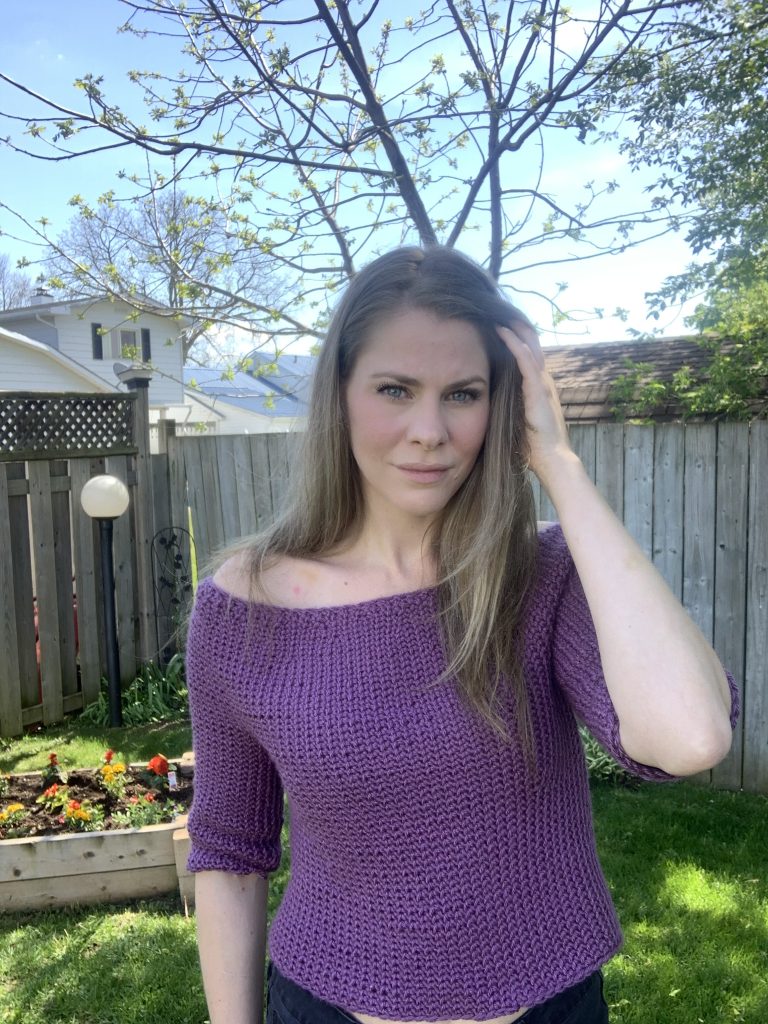
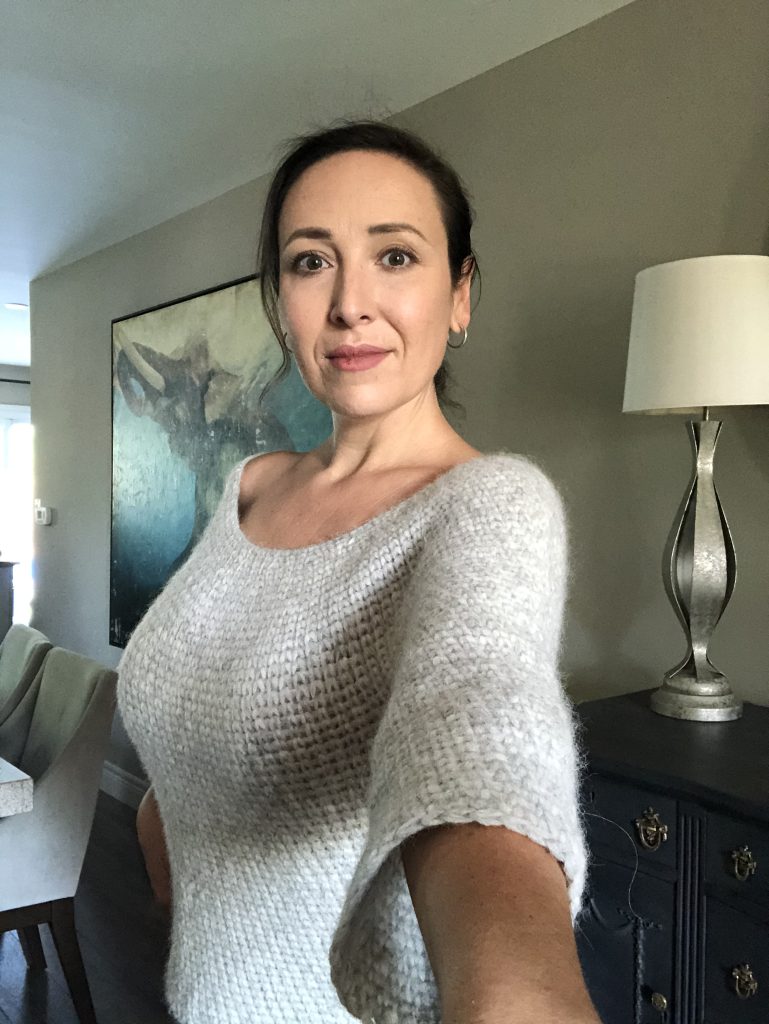
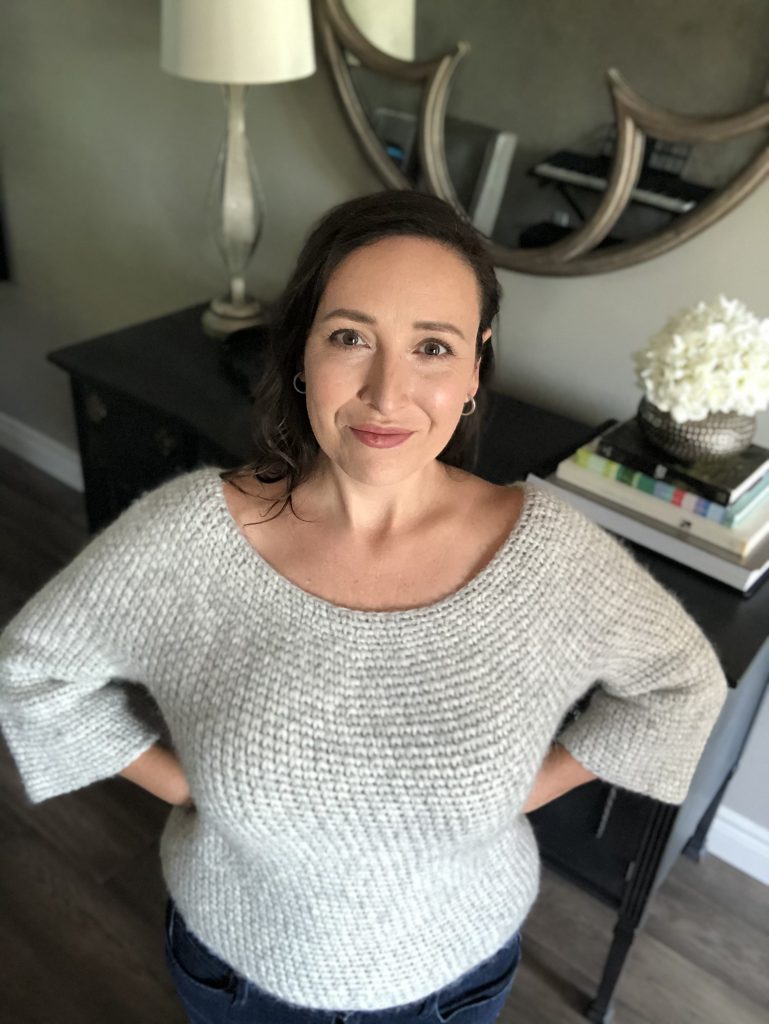
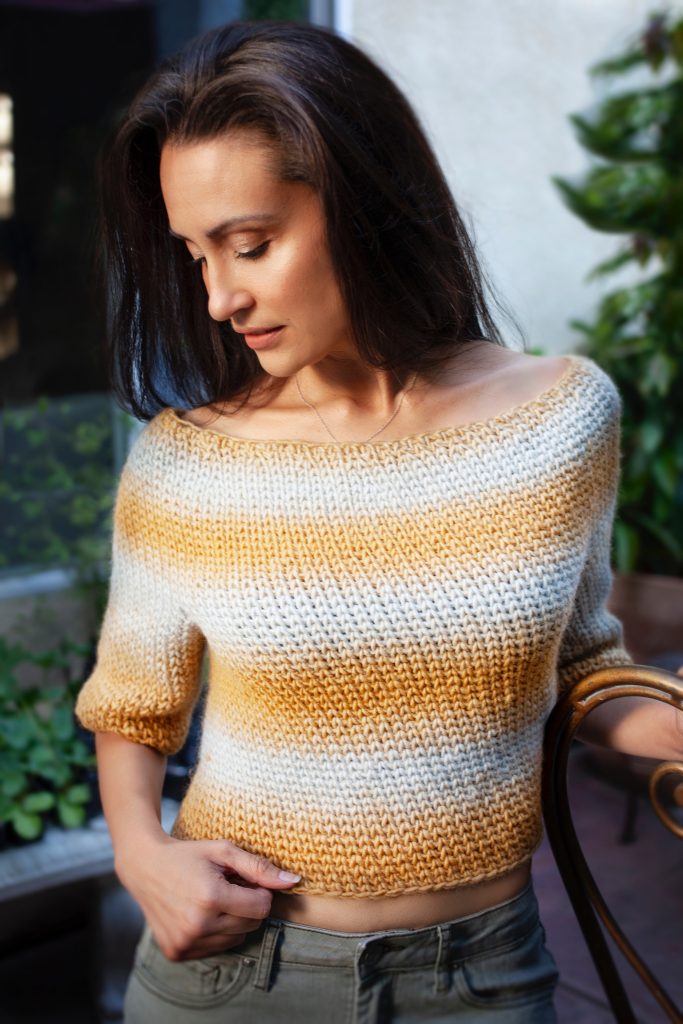
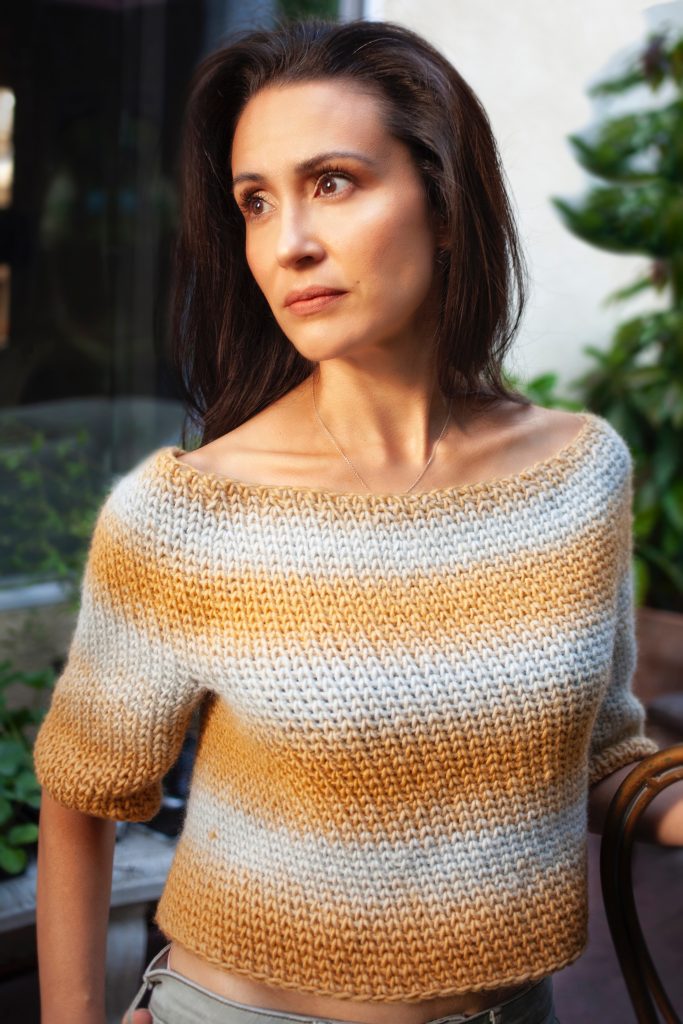
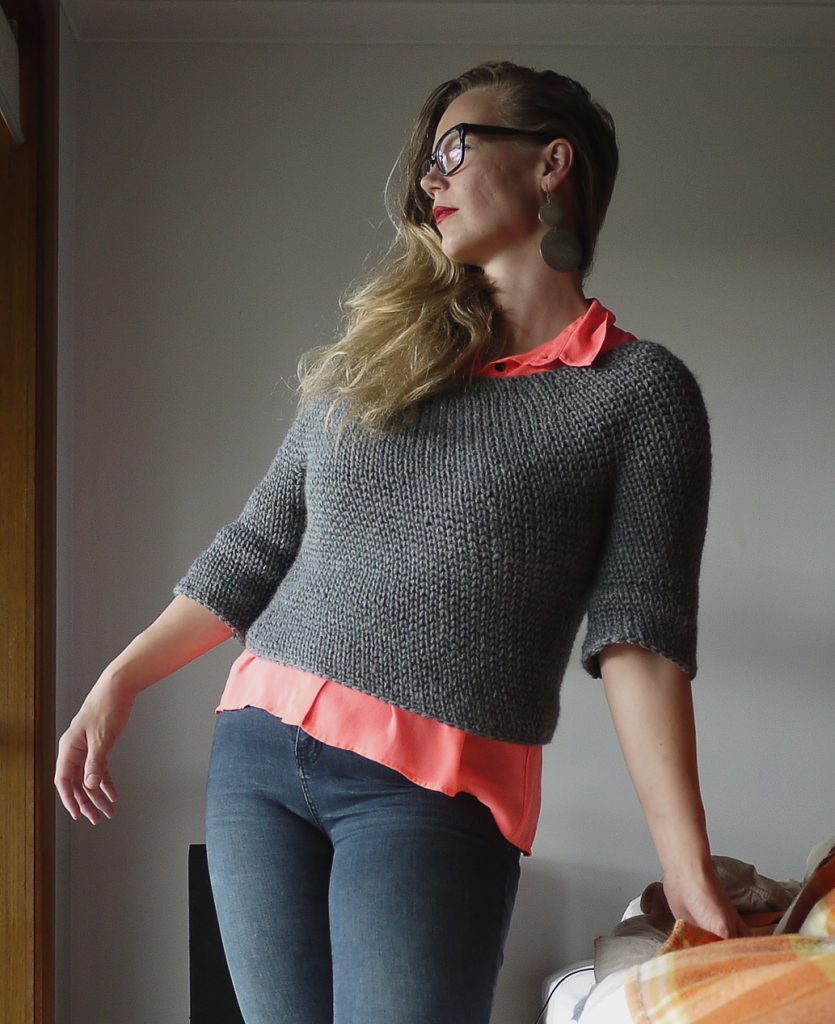

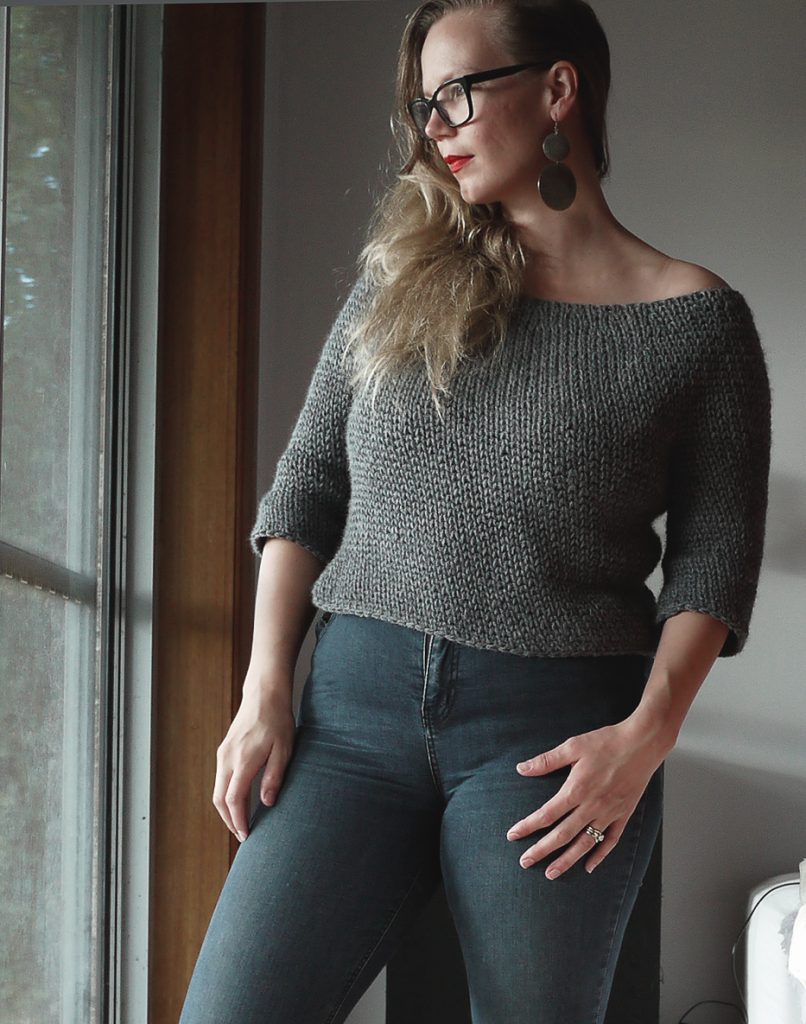
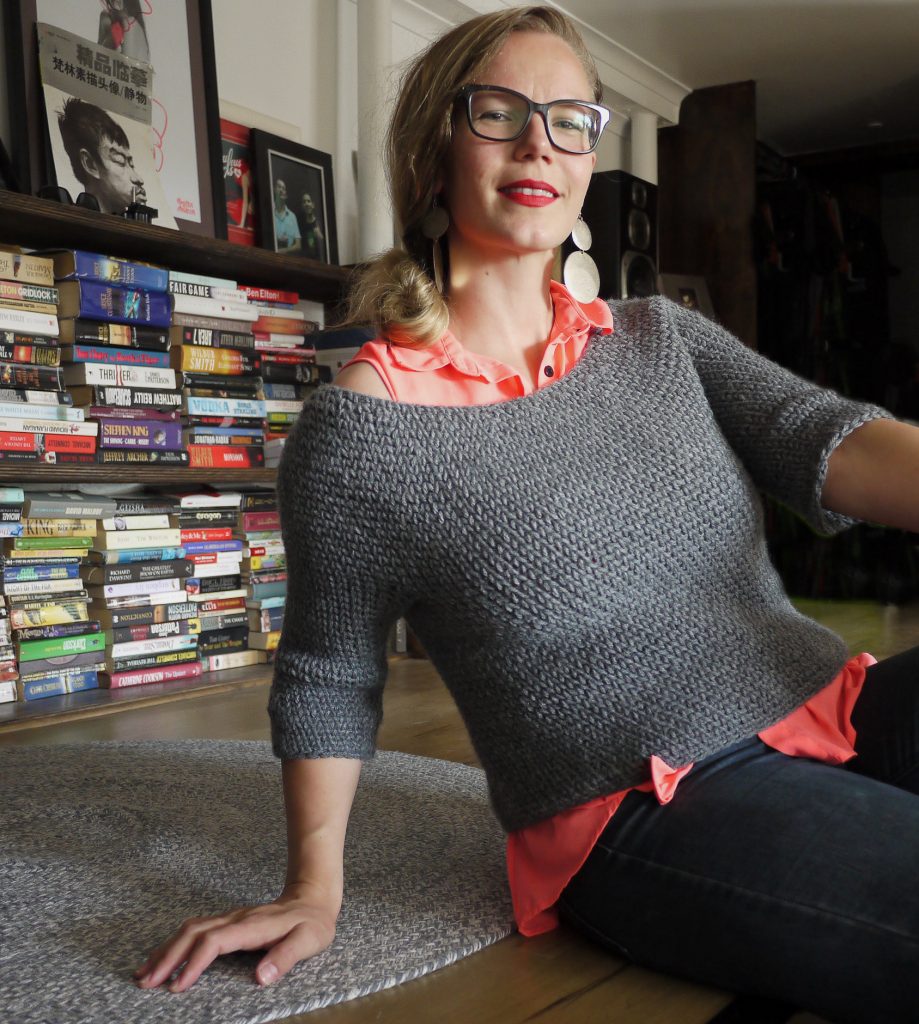
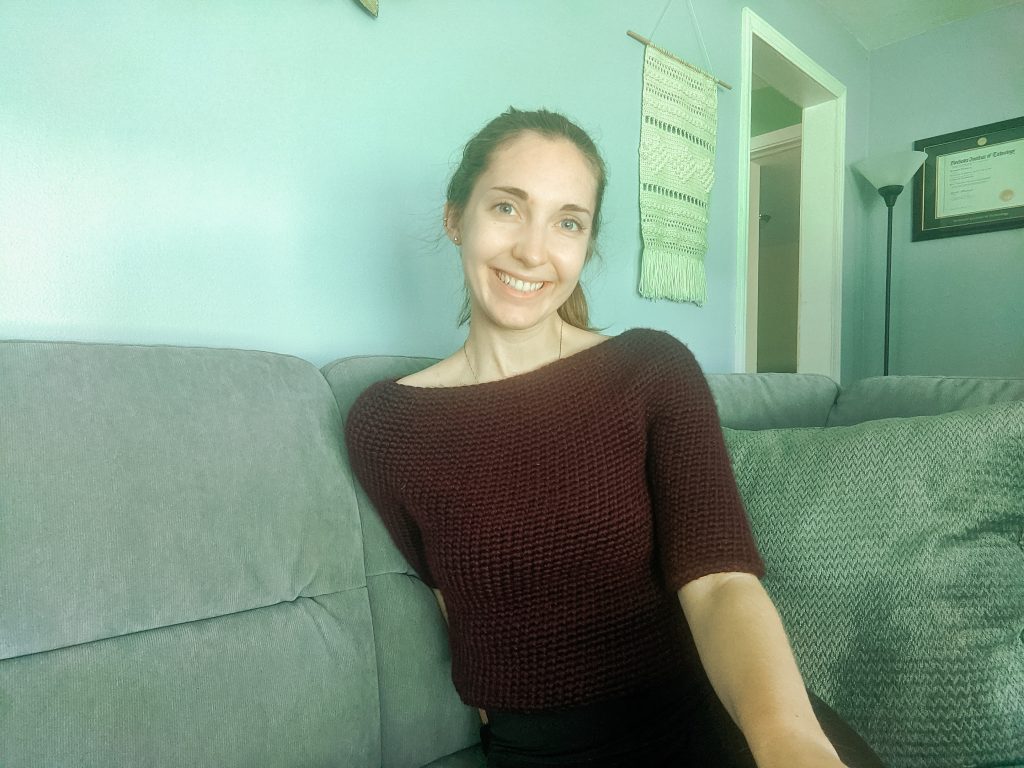
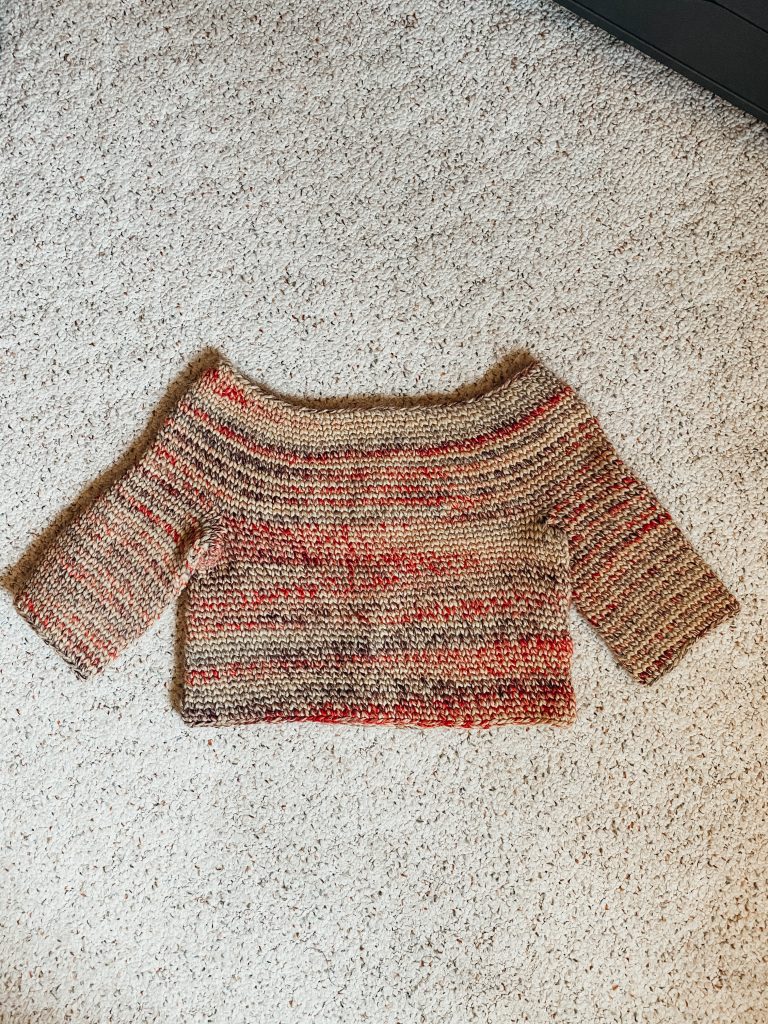
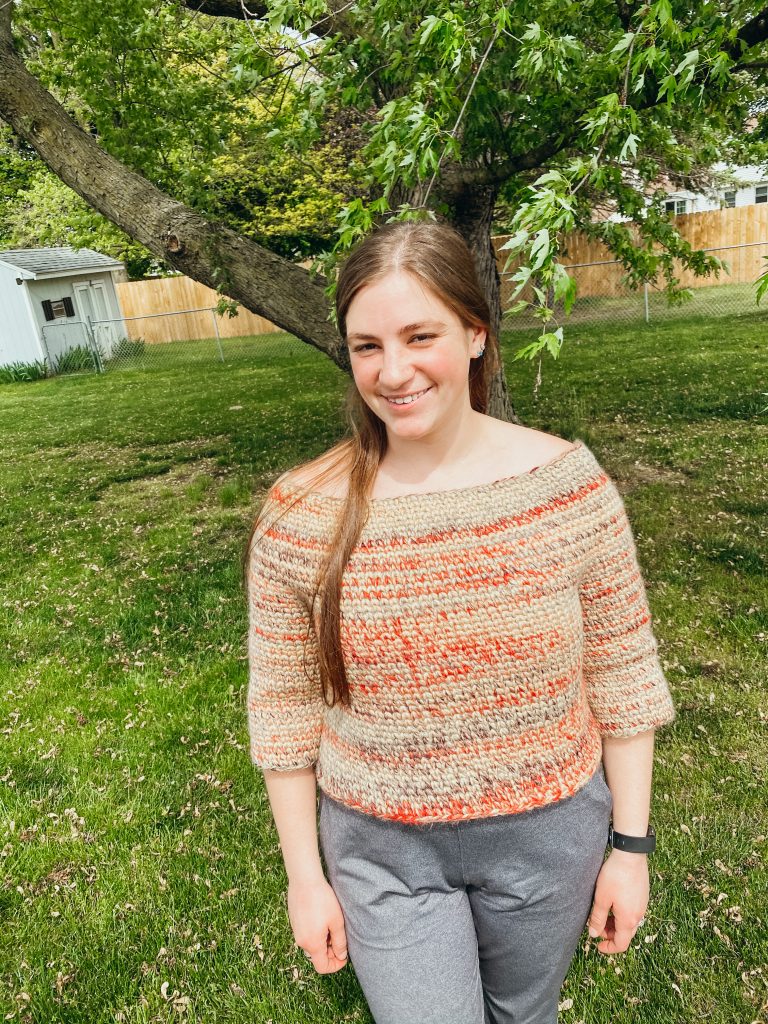
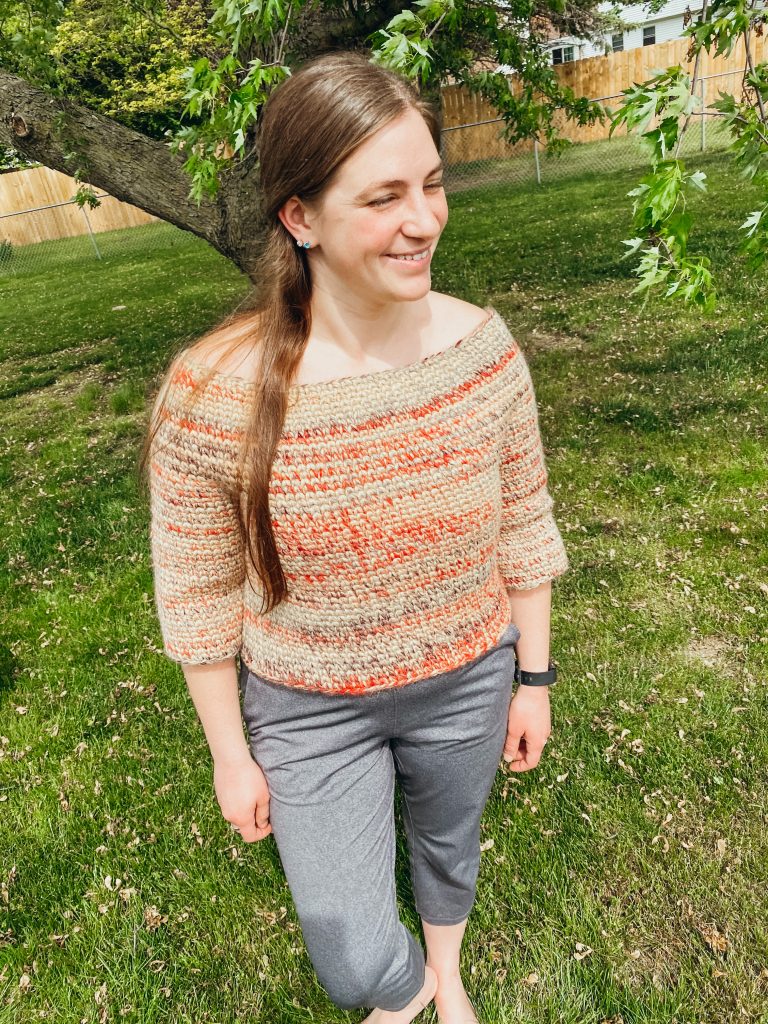
#ModernCrochetSweaters
#SugarplumPullover
Thanks so much for reading!
You can find my full print book, Modern Crochet Sweaters: 20 Chic Designs For Everyday Wear on the shelves of all major retailers or see purchasing options here!
To shop this Sugarplum Pullover crochet pattern, find it on Ravelry, Etsy, or my website!
Shop WeCrochet Biggo yarn here, or a more lightweight version – WeCrochet Wonderfluff, here.
x
Janine
For exclusive discounts on all new patterns, join the Knits ‘N Knots newsletter list here!
